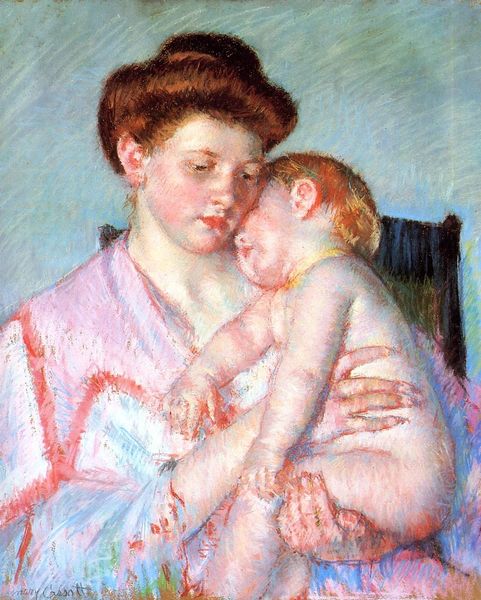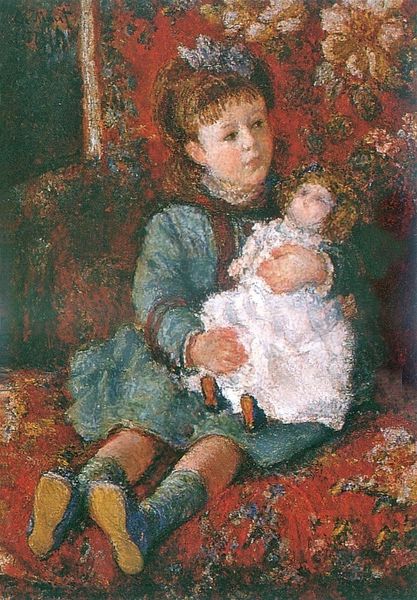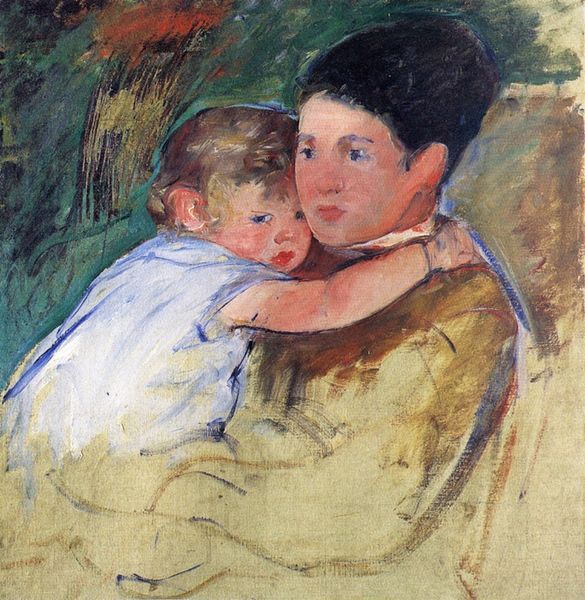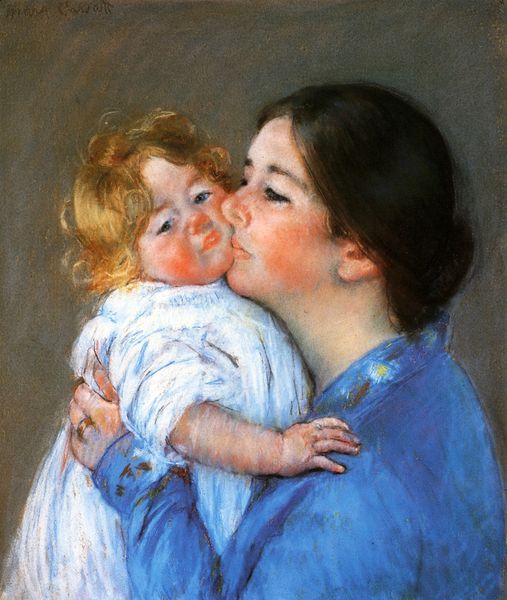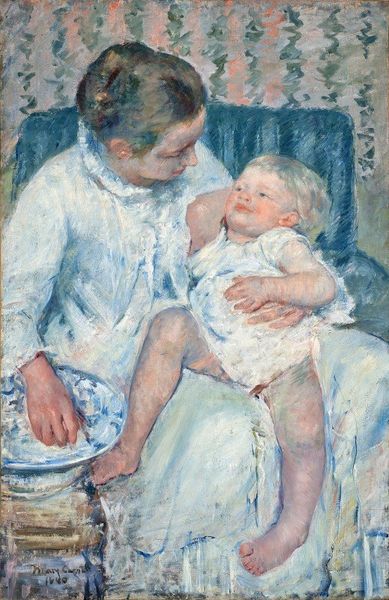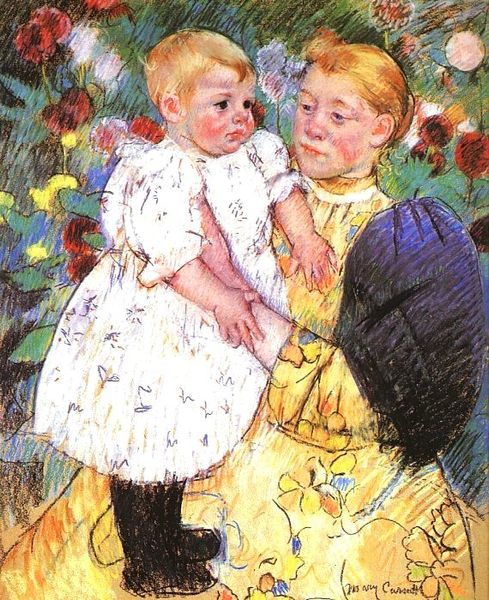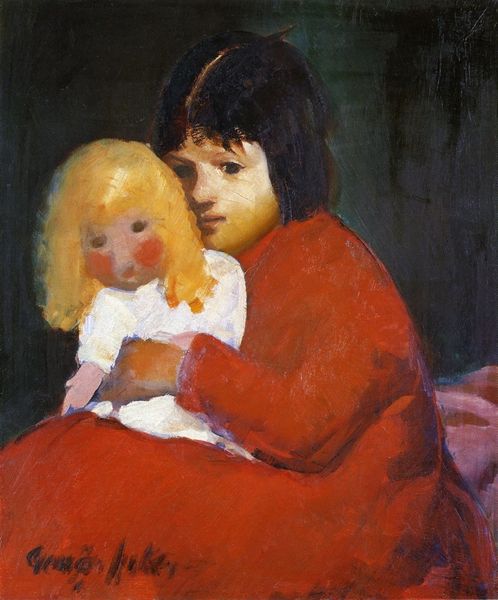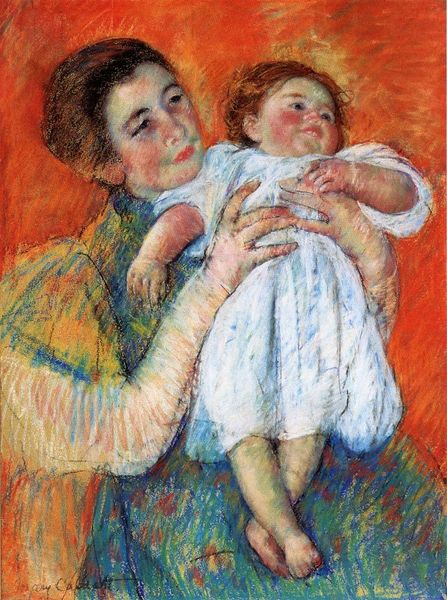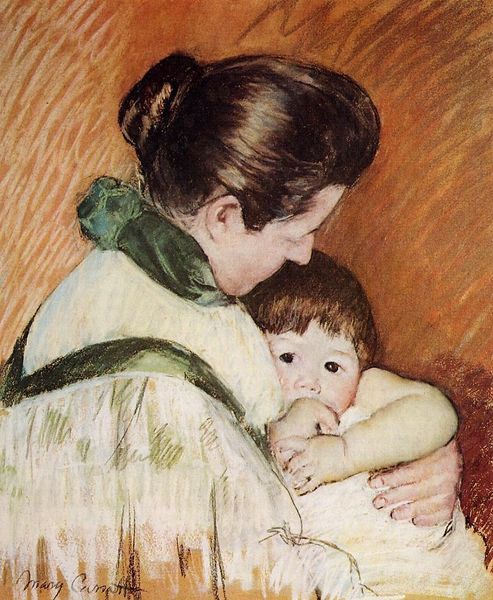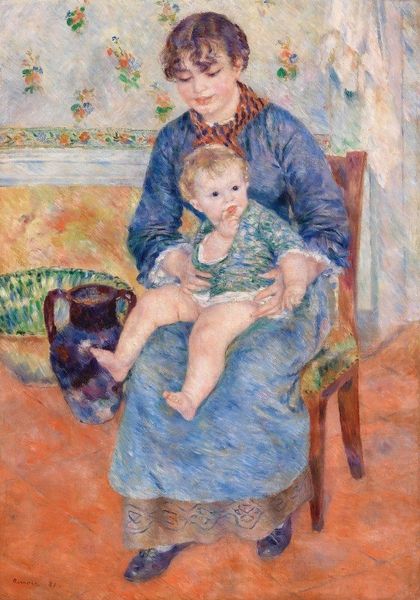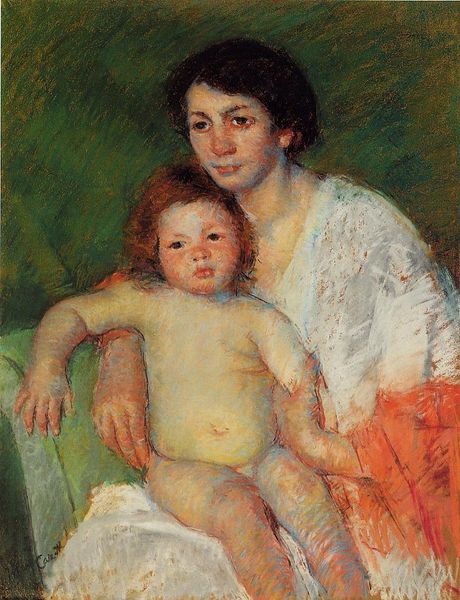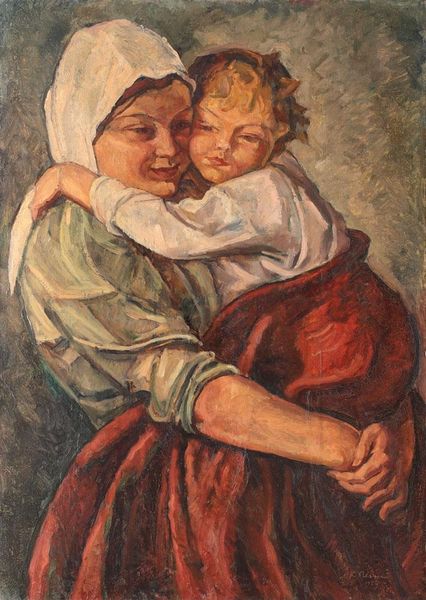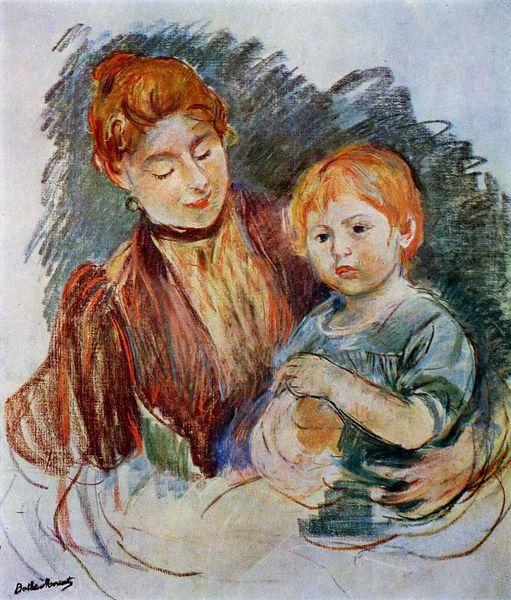
Maternity (child with a biscuit) 1887
0:00
0:00
pierreaugusterenoir
Daniel Malingue Gallery, Paris, France
painting, oil-paint
#
portrait
#
painting
#
impressionism
#
oil-paint
#
oil painting
#
genre-painting
Dimensions: 46.5 x 56 cm
Copyright: Public domain
Curator: Pierre-Auguste Renoir’s “Maternity (child with a biscuit)” completed in 1887, offers a tender glimpse into domestic life through oil paint. Editor: It feels immediately comforting. There's a stillness, an almost tangible intimacy radiating from this scene. It speaks to quiet moments. Curator: Absolutely. The composition is interesting—see how Renoir employs loose brushstrokes, a hallmark of Impressionism, to create a soft, almost blurry effect? The faces, however, retain sharp details, bringing attention to the intimate moment shared. Editor: True, and how significant to call it ‘Maternity’. Is it maternity or sisterly, the maternal bond depicted transcends strict biological definition. The girls' dresses hint at gendered social codes being learned. Even the child’s biscuit subtly gestures to material comfort, while the averted gazes speak volumes about complex relationships, expectation, and hidden emotional labor within domestic spaces. Curator: I am interested to know how the arrangement creates that bond that exists, and not focusing solely on the identity and gender. For instance, notice how the older girl's arm curves around the child—structurally, this reinforces the idea of protectiveness, visually forming a sort of gentle enclosure. Editor: I do not see enclosure. It could also signal a societal expectation placed upon young girls within those eras—burdening children to be caring, self-sacrificing, to embrace motherhood by caring for smaller children. The choice of such gentle color is key to enforcing that innocence that we expected to be portrayed by young females. It becomes interesting to consider which social dynamics come into play. Curator: Still, by focusing too much on the social dimension we would lose an interesting artform that offers structural composition and material agency. What appears to be is that you focus on what an artwork "represents," ignoring how art achieves it with composition. Editor: Well, I guess my question about "Maternity" is not so simple, after all. Curator: Yes, because these formal arrangements do so much with line, shape, and form in the process to trigger emotions and ideas. Editor: But hopefully, this sheds some new light regarding this beautiful artwork and the cultural impact behind the creation and message of it.
Comments
No comments
Be the first to comment and join the conversation on the ultimate creative platform.

